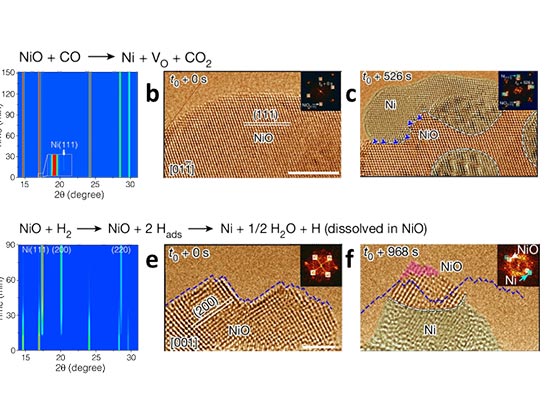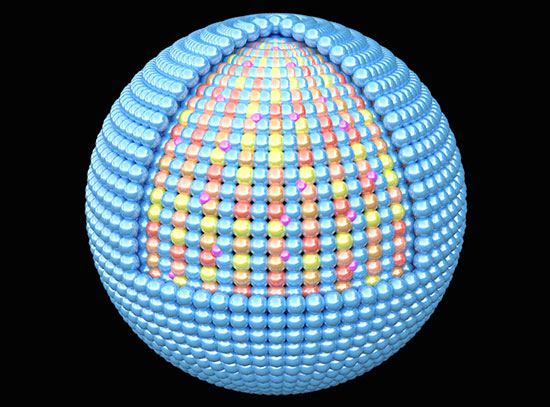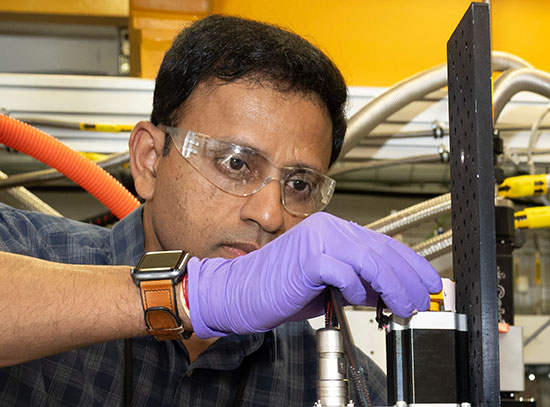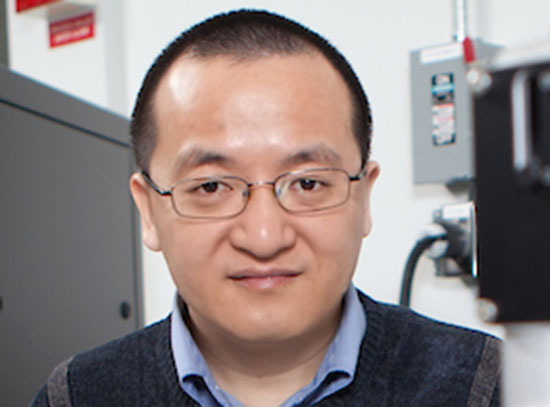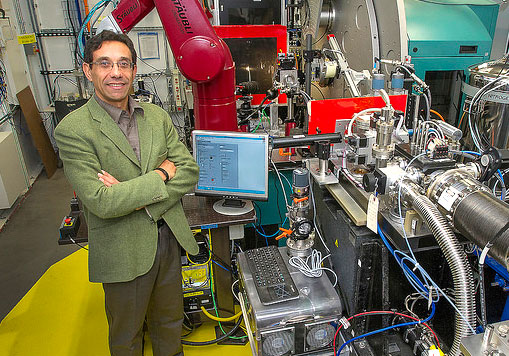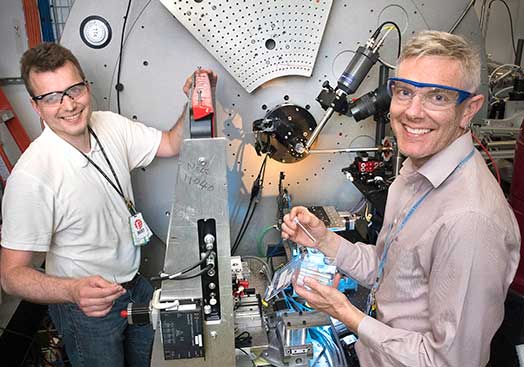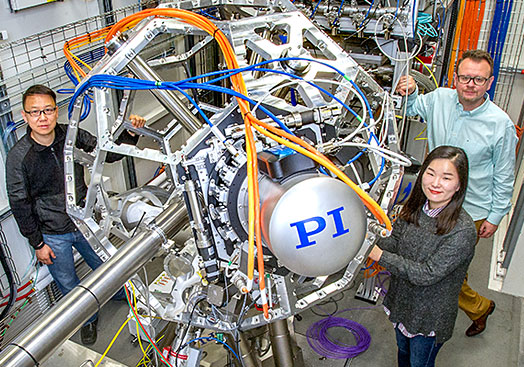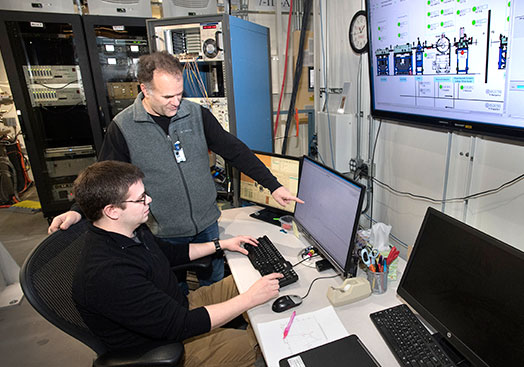
Hard X-ray Scattering & Spectroscopy
Uncovering and revealing the nano- to mesoscale structure and complex dynamics of heterogeneous systems under in situ conditions
The Hard X-ray Scattering & Spectroscopy program at Brookhaven Lab’s National Synchrotron Light Source II offers world-class capabilities for studying complex and heterogeneous materials under in situ and operando conditions. The program provides specialized spectroscopy, diffraction, and imaging x-ray tools, supported by computational resources for high-throughput analysis and modeling. The program’s scientific focus is to understand and optimize the structural and chemical features of functional and natural materials, including energy conversion and storage materials, strongly correlated systems, minerals, ceramics, alloys or porous organo-minerals under non-ambient and dynamic conditions.
Program Beamlines
Beamline for Materials Measurement
BMM offers capabilities in x-ray absorption spectroscopy and x-ray diffraction for studying materials for important societal challenges in energy, health, environment, and national security. With its high-intensity photon flux and its two diverse experimental setups, BMM helps scientists unlock the mysteries of hard matter materials for battery research and electro catalysis using state-of-the-art experimental equipment.
High Energy X-ray Diffraction
The High Energy X-ray Diffraction (HEX) beamline will be a powerful and versatile tool to advance energy storage and conversion research, such as battery development and materials engineering. It will combine x-ray diffraction and imaging tools with a monochromatic or white beam to enable the study of real atomic structures under working conditions and in real time. HEX will help design materials for new energy storage systems and is supported by New York State.
Quick X-Ray Absorption and Scattering
The QAS beamline is optimized for characterizing the complex chemical behavior of crystalline and amorphous materials with sub-second time resolution. By combining x-ray spectroscopy with x-ray powder diffraction and optical spectroscopy, QAS serves a wide range of communities in chemistry, materials science, energy conversion, and energy storage.
Pair Distribution Function
The Pair Distribution Function (PDF) beamline offers a powerful technique for studying local structural fluctuations in complex materials. Researchers can study unique optical, electronic, magnetic, and chemical properties of quantum dots or nanoparticles composed of a few thousand atoms. In situ measurements during synthesis provide structural insights into how materials grow from precursor nuclei or molecules into bulk samples. For example, time-resolved measurements can be used to track structural transformations inside batteries and fuel cells.
Inner Shell Spectroscopy
The ISS beamline offers researchers highly advanced tools for studying chemical processes under operando conditions and material growth in situ. The beamline’s high photon flux and broad-band hard x-rays offer optimal conditions for studying energy storage, energy conversion, and catalysis. The expertise of the beamline staff and instrumentation is well-aligned with battery research, electro and heterogeneous catalysis, and materials growth.
X-ray Powder Diffraction
The X-ray Powder Diffraction (XPD) beamline is optimized for investigating the atomic structure of complex bulk samples and buried interfaces, as well as the inside of cells or devices through noninvasive techniques. Fast data collection rates are combined with a large variety of sample environments to provide an ideal tool for studying materials under conditions far from equilibrium. XPD serves scientists from a wide range of disciplines, including physics, chemistry, earth science, engineering, and basic and applied sciences.
-

Wah-Keat Lee
(631) 344-4085, wklee@bnl.gov
Hard X-ray Scattering News
Our Partners

NSLS-II partners with
Columbia
University to
develop and build software for instrument control, data
acquisition and online visualization and processing as
well as new capabilities for the XPD and PDF beamlines.
This partnership also includes support for the
high-energy science user community at both beamlines.

NSLS-II partners with the National Scientific User Facility (NSUF) to develop and operate XRD/PDF CT-tomography equipment at the XPD beamline.

NSLS-II partners with the National Institute for Standards and Technology
(NIST) to develop and operate the BMM beamline.





